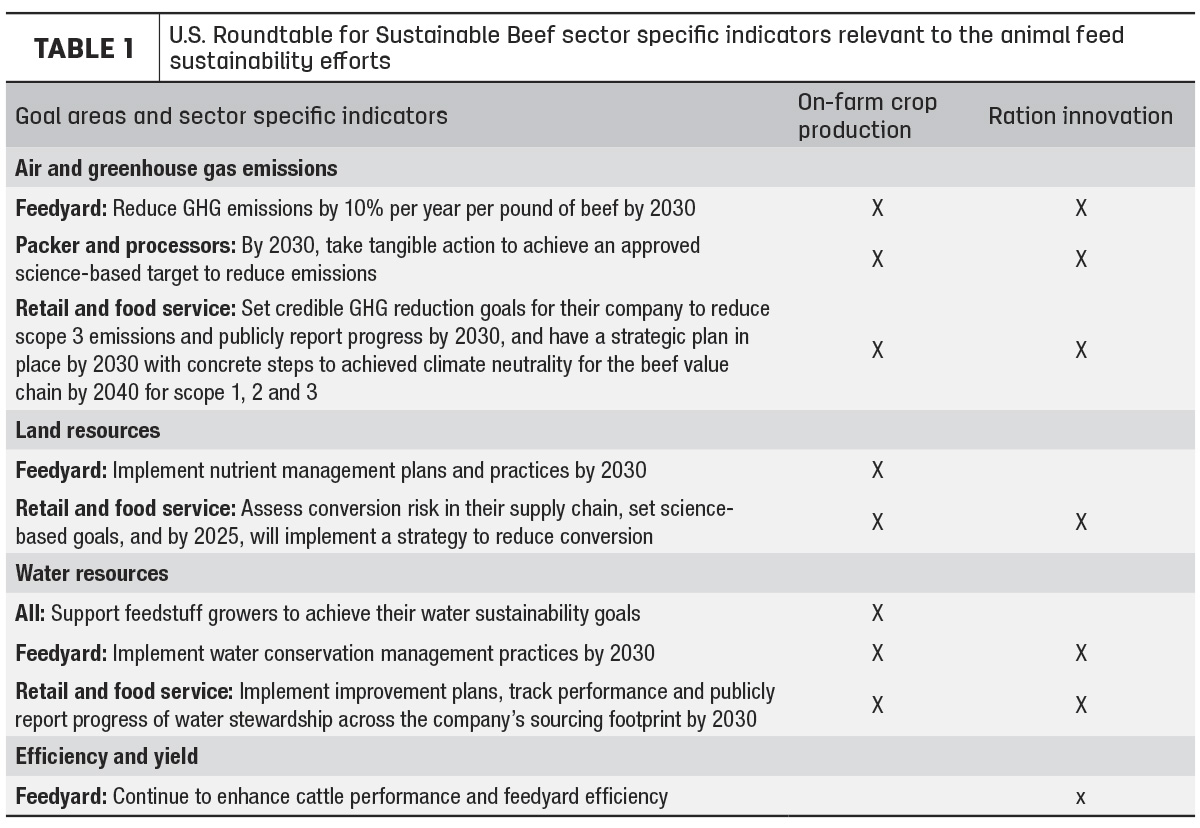In general, reducing the environmental footprint of beef production through feed falls into one of two categories: crop production on the farm or ration innovation. How can we marry the two in a way that makes sense for both the feed and beef industries?
Within crop production, farmers are adopting more sustainable practices – for example, conservation tillage, fertilizer best management practices or precision irrigation, which provide measurable results. For ration innovation, feed manufacturers are helping beef farmers optimize feed intake and production efficiency through ingredients or additives fed directly to animals or by modifying on-farm feeding strategies to reduce waste.
With a mission to advance the understanding and trust in a sustainable animal feed supply chain, the Institute for Feed Education and Research (IFEEDER) has been focusing on supporting sustainability efforts of the feed industry and its customers. Based on input from members of the feed industry, as well as stakeholders upstream (i.e., feedstuff producers and farm input providers) and downstream (i.e., livestock and poultry producers, processors and consumer-facing retailers) in the value chain, IFEEDER is initiating projects to:
- Pursue industry-wide consistency for how feed data is measured, reported and verified across key indicators and metrics important to the industry and its customers
- Quantify and communicate the environmental benefits of innovations (e.g., in animal feed development, ingredients and additives) to support reducing the environmental footprint of animal agriculture
- Improve the efficiency and effectiveness of the use of life cycle assessments (LCAs), so the industry and its customers can make progress toward their sustainability goals
The initial step for the first objective is working with feed customers to understand their sustainability priorities and metrics relevant to feed, and for beef, direction is now taking shape.
In 2022, the U.S. Roundtable for Sustainable Beef (USRSB) announced industry goals and sector targets linked to air and greenhouse gas (GHG) emissions, land resources, water resources, employee safety and well-being, animal health and well-being, and efficiency and yield. Of the six goals, the USRSB feed sustainability task force identified four areas specific to feed along with the supporting sector-specific indicators.
“Reaching our goals requires cross-industry collaboration,” says USRSB Executive Director Samantha Werth. “Feed sustainability efforts linked to on-farm feedstuff production or ration innovation will play an important role in our program.”
By linking ration-driven animal performance improvements to environmental benefits, work on IFEEDER’s second objective will support several of the U.S. beef industry’s targets. First steps for the second objective will include documenting the link between ration-driven animal performance measures, such as production efficiency and feed conversion efficiency, to environmental benefits such as reduced feed use or time to market.
Product LCAs (e.g., a feed ingredient) or production system LCAs (e.g., a cattle feeding operation) help us understand where to focus our efforts for further reducing beef’s environmental footprint. IFEEDER’s third objective will provide guidance to the feed industry on submitting data to the industry’s Global Feed LCA Institute (GFLI) feed database. The GFLI is a public database documenting the environmental footprint of feed ingredients. IFEEDER’s work aims to increase the selection of ingredients it includes. The GFLI database can be used as a component of broader production system LCAs to evaluate the impact a selected ration has on beef’s environmental footprint, further supporting industry goals.
Advancing feed sustainability is inherent to IFEEDER’s mission. Partnering with the feed industry and its beef customers is paramount to achieving that outcome.









